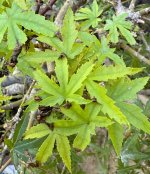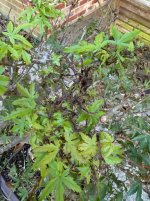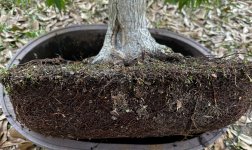DeepSouth
Mame
I acquired a couple of mature japanese maples at an auction a couple of months ago. One was, and still is, very healthy. The other not so much. Looking back, I realize I probably should not have purchased it as I noticed it had several issues at the auction, but alas, it does not seem severe enough to not be curable (at least I hope).
It had several decaying/crispy leaves at auction. Over time, it has lost at least 35% of its leaves and the new ones that are growing are are turning black and crisping up. I have kept the tree in a mostly shady area with consistent watering. I have other acer palmatums in my collection that have done well in this particular location of the garden.
The leaf blackening seems to start either at the edges of the leaves or near the petiole, spreading out through the veins. Eventually the entire leaf dies.
I initially thought it was fungal. I have been spraying with daconil regularly and have treated the tree with systemic fungicide (Bonide Infuse granular) to no avail.
I have a few others with similar symptoms, though not to this extreme extent.
This species tends to struggle here in late Summer (I still consider us to be in Summer), but this seems pretty extreme.
New Leaves:
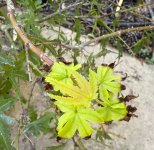

This is what they look like before they fall off:
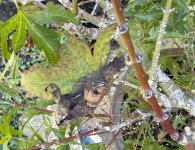
It had several decaying/crispy leaves at auction. Over time, it has lost at least 35% of its leaves and the new ones that are growing are are turning black and crisping up. I have kept the tree in a mostly shady area with consistent watering. I have other acer palmatums in my collection that have done well in this particular location of the garden.
The leaf blackening seems to start either at the edges of the leaves or near the petiole, spreading out through the veins. Eventually the entire leaf dies.
I initially thought it was fungal. I have been spraying with daconil regularly and have treated the tree with systemic fungicide (Bonide Infuse granular) to no avail.
I have a few others with similar symptoms, though not to this extreme extent.
This species tends to struggle here in late Summer (I still consider us to be in Summer), but this seems pretty extreme.
New Leaves:


This is what they look like before they fall off:


